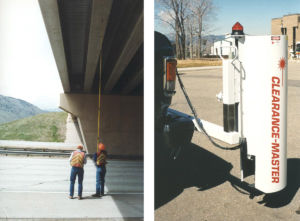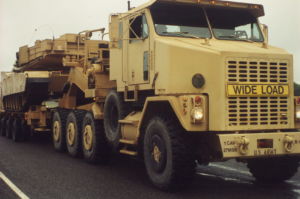TIMELINE
What began as university research became the foundation of one of the premiere providers for diagnostic testing, infrastructure monitoring, and nondestructive evaluation in the world. This occurred during the early stages of the personal computer and was a result of hard work, creativity, persistence and of course living “under bridges”.
Starting Out 1988-1990

University of Colorado research: Testing 50 Bridges around the country while living in a motorhome below each structure.
The research project took two years, and included several adventures and misadventures in the field including lightning strikes taking out equipment, cattle getting tangled in instrumentation cables and destroying equipment, and a semi-truck wheel hitting the motorhome. The entire team survived all of this while testing, and in every case, obtained excellent data. During the entire two year testing period, many of the district DOT (department of transportation) personnel in each location would “adopt” us for the week. They would visit us daily to see how things were going, bake us delicious goodies such as coconut cream pies, and lend us movies to play on our portable VHS player including the classic “Killer Klowns from Outer Space”.
Bungee Jumping 1990

Once formed, one of BDI’s first projects consisted of recording data for a startup company that offered bungee jumping from hot air balloons. The testing system was configured to record data from the gondola supports to ensure an adequate factor of safety was being maintained. An FAA representative oversaw testing, and payment consisted of eight free bungee jumps.
Long-Term Monitoring

Based on experience gained through all of the temporary field testing, BDI began installing equipment for longer-term data collection.
ClearanceMaster 1993 - 2015


One afternoon while meeting bridge inspectors from the Colorado Department of Transportation (CDOT), they mentioned they were very tired after being up all night to record roadway clearances so that height limit signs could be posted if necessary. BDI personnel were amazed to learn that the measurements were being obtained by graduate students using telescoping rods on the roadway at night during lower traffic volumes. As each individual measurement was made, the student would shout the reading over to the inspector who would write them down. To BDI, this was an opportunity to develop an automated laser system that inspectors could mount on their van and never leave the vehicle. The first system was delivered to CDOT and they reported they were dramatically increasing their amount of sleep.
Supporting Research Efforts 1991 - Present

Many of BDI’s first projects consisted of supporting research institutions by conducting field tests on highway bridges and providing data for specialized analysis. Soon, railroad bridges and river control structures were also being added to the project list.
Developing & Manufacturing Hardware
 Also, during this exciting period, development began of a new “modular” testing system to be manufactured and sold to clients to complete their own testing. The experiences gained by developing this new “Structural Testing System” (STS) launched another entire revenue stream for the company that led to providing systems and training around the country and world. China became the largest STS customer, with many other countries soon being added as customers including Australia, Thailand, and Malaysia.
Also, during this exciting period, development began of a new “modular” testing system to be manufactured and sold to clients to complete their own testing. The experiences gained by developing this new “Structural Testing System” (STS) launched another entire revenue stream for the company that led to providing systems and training around the country and world. China became the largest STS customer, with many other countries soon being added as customers including Australia, Thailand, and Malaysia.China became the largest international STS customer

Full NDE Division

While BDI has utilized Nondestructive Evaluation (NDE) tools like ground-penetrating radar and acoustics for pile evaluations, a full NDE department was developed in 2016 to provide a complete suite of nondestructive testing and evaluation tools to our clients. From high-speed bridge deck inspection with our novel SounDAR device to American Society of Nondestructive Testing (ASNT) certified steel inspectors and everything in between, BDI provides NDE/T for all of our clients. These solutions typically go hand in hand with our testing and monitoring solutions and provide insight into why a structure may be behaving the way that it is. Additionally, we can use these tools and methodologies when testing and monitoring results identify an area of the structure that needs a higher resolution inspection. Overall, the NDE division supports BDI and its clients in providing a cradle to grave structural evaluation solution.
Developing Safety Programs

Critical to completing the field testing, several safety programs needed to be developed specifically for construction, highways, railroads, and river control structures since they are all under the jurisdictions of different agencies. Ropes access program has been developed which has required a great deal of specialized training for project personnel. A very large and comprehensive program was developed which is still followed and periodically updated.

